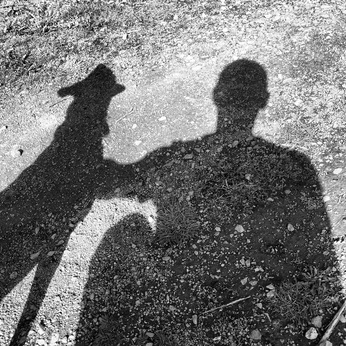You may have noticed that the weather has suddenly decided to be hot. This can be rather uncomfortable for us humans, but can be a real problem for humankind’s best friends: the trusty dog. So here are some tips to help you be mindful this summer:
Like children, dogs need to be carefully protected during the hot weather. Many dogs love to lay around in the sun, but heatstroke is very dangerous to dogs and the symptoms tend not to present themselves until the condition is severe.
Cooling coats can be purchased in some pet stores and are readily available online. Soak it in cold water for ten minutes before putting it on your dog, then re-soak or pour more water over them at least every hour. This will help keep your dog’s body temperature low. It is also advisable to put cool (not cold) water on your dog’s head while they are outside, as the head and brain suffer from heatstroke fastest and most severely.
Limit the time your dog spends outside. This doesn’t just mean time spent directly in the sun, but the hot weather is uncomfortable even in the shade. Keep your dog in the house with windows open for plenty of airflow and NEVER leave a dog in a car, even with the windows down. There is no way to escape the heat in a car; the metal body of the car acts like an insulator (similar to a travel mug or hot flask) and builds the temperature to dangerous levels even with all the windows completely open. If you’re going to have to leave your dog, leave them at home with some windows open and a couple of bowls of fresh water for hydration.
It may seem tempting to give a hot dog a very cold drink of water, but this can cause shock in their systems and lead to more complications. If a dog is overly hot, give them cool water that is just above “room temperature” as it will quench their thirst without risk. Warm water will not help them to cool down and cold water or water with ice in it can do more harm than good, as stated previously.
An ice cube can be a nice treat if you freeze your dog’s favourite treat inside, but don’t forget to run the ice cube under water before giving it to your dog or it could stick to their tongue and be very painful!
Ice cream is nice, and of course dogs have an incredible skill for persuasion with those big doleful eyes. However, a hot dog should not be given ice cream for the same reason they should be given very cold water (read above) and any dog should be limited in how much ice cream they consume. A very small amount of ice cream, quite literally just a little taste, is a pleasant treat for your dog, but their system cannot digest dairy or sugar very well and too much will make them ill. And of course, please don’t give them any of the sauce or the flake as sugar and chocolate are very dangerous to dogs.
Walks should be restricted to early in the morning (before 8.30am) and later in the evening (after 7.30pm) as between these times the sun can be too strong and the temperature can be too high. Again, heatstroke sets in very easily in dogs, particularly when they are exercising. Also, have you ever walked barefoot at mid-day on a pavement? It’s very hot and burns your feet! This is the same for dogs. They may have hardened pads on their feet but they still burn very easily and it’s a truly painful and nasty injury.
At night, make sure your dog has somewhere cool to lay (fluffy beds can get very warm) and some good airflow. If you can, leave a window open or leave a fan directed at them from somewhere they can’t reach it or knock it over. Of course, make sure they have plenty of fresh water to drink during the night.
Of course if you see any animal locked in a car in hot weather (even with the windows open) and the owner is not immediately apparent, you should contact the police immediately. Breaking a car window ideally should be left to the police force as for anyone else to do so is considered criminal damage and you could find yourself with a criminal record. It is also advisable to take photos of the car from multiple angles to show the animal inside, what ventilation has been allowed and the registration plate so that the police can follow up with the owner once the animal is safe.





